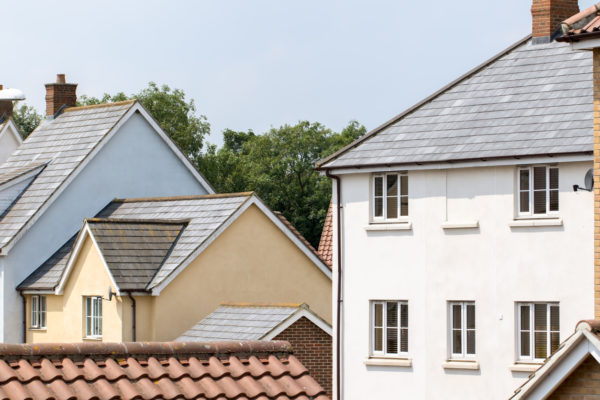Exploring the golden thread of design in new housing development

With design quality high on the agenda for government and the housing industry, research by UK Collaborative Centre for Housing Evidence (CaCHE) is exploring how design value is delivered at each stage in the development process. This blog by Tom Kenny has been reposted from the CaCHE project website.
Whilst many involved in the housing sector bemoan the quality of much of new housing stock, it cannot be said that design isn’t a hot topic at the moment. The government introduced a dedicated design chapter into the Revised National Planning Policy Framework, the Building Better Building Beautiful Commission is working on a high profile new report, and some housebuilders are making design a major priority.
Design is also a priority for CaCHE, with a particular focus on placemaking as opposed to beauty or buildings alone. Our 2018 review, Design value at the neighbourhood scale, provided a basis for understanding how design value is conceived of and operates at a neighbourhood scale. It also included a section on how design value enters the development process, all the way from national policy through design and construction, to post-occupancy evaluation.
Our new research project, Delivering design value, will build on this through new primary research on the ‘golden thread’ of design, focusing on the key stages at which design value was delivered in ten recently completed developments spread over 5 case study local authorities.
What is the purpose of this research?
A lot of research and publicity around design value understandably focuses on exemplar developments (or particularly bad ones). However, if you investigate these outliers they are often dependent on exceptional circumstances – in particular where the landowner or developer has been particularly progressive, and often prepared to give up some of their profit, at least in the short term.
However, in reality, we live in a market dominated by a small number of huge developers, who are understandably driven for the most part by profit maximisation. In a country where the top 8 housebuilders deliver 50% of new homes, it’s essential to focus on how design value operates in this context.
I am shocked at how often I hear design professionals question whether high-quality design can be delivered without an altruistic landowner. This is probably unfair given we do have policy which supports good design and some volume housebuilders make design quality a key part of their brand. Indeed I hope that our research uncovers how design can be successfully implemented at each stage in the process in these everyday developments. However, it is also crucial to further understand scepticism about the systematic delivery of good design in UK housebuilding.
How are we going to answer our research questions?
This research is divided into two main parts. The first is a literature review combined with expert interviews to understand existing knowledge on this subject, including on:
- Who are the key players in delivering design value at each stage of the development process?
- What skills and investment are needed?
- At what point does attention to design value have the biggest impact?
In addition to providing a core evidence base for the final report, this will also help us generate hypotheses to test in the case study section of the research.
The second stage, our primary research, will focus on five case study local authorities around the UK, (two from England, and one each from Wales, Scotland and Northern Ireland). We picked each authority because we consider them to be relevant to exploring typical developments in that nation. We debated a number of ways of achieving this but eventually decided on ranking authorities by the numbers of homes they delivered in the last three years then picking a shortlist of the authorities who were around the ‘middle’ house delivered in that region. In practice, this means authorities who are delivering more than the median for their region, but not those delivering the most. We also sought to achieve a degree of diversity on several key factors such as average house price and population density.
For each authority, we will pick two recently completed developments of larger than 30 units. We will then:
- Conduct desk research to identify key documents relating to the authority and development, for example planning policy and applications, local housing market data, local design documents, and media coverage.
- This desk research will help inform the main fieldwork stage, which will involve semi-structured interviews with a selection of key actors along the Golden Thread of design, all the way from landowners to construction project managers.
We hope to bring this all together to paint a rich picture of the practical ways in which design is delivered in new housing developments.
What stage are we at currently?
In recent months we have been sketching out the context review, developing our methodological approach as described above, and identifying our priority case studies. For all of this, we have drawn on the expertise of our superb advisory group, which brings together design experts from around the UK. We now have ethical approval for the project and aim to start recruiting for the case studies and expert interviews soon.
Our aim is to produce an interim report in early 2020 and a final report complete with detailed case studies, findings and recommendations for policy and practice, around Summer 2020. If you have any questions about the research or would like to point us towards existing knowledge on this subject, please get in touch.